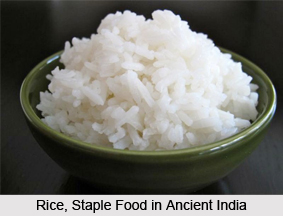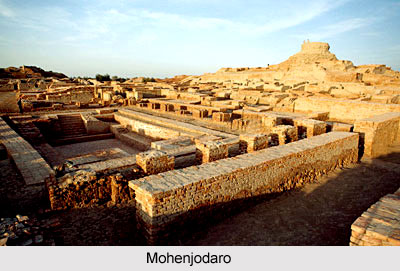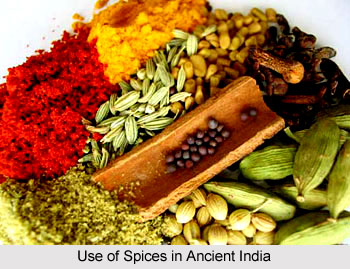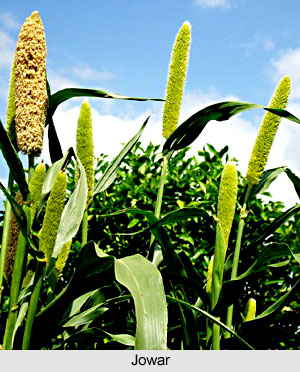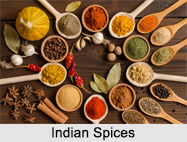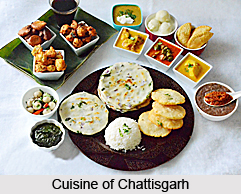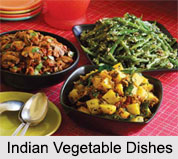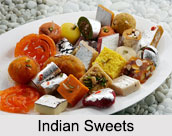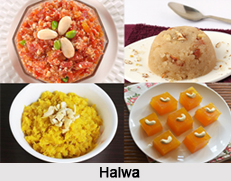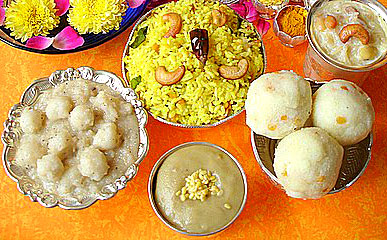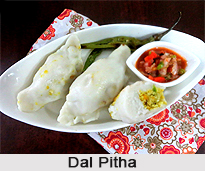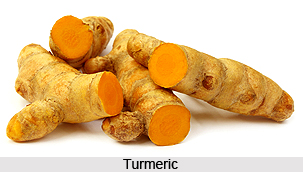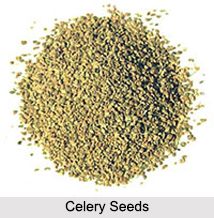 Celery seed is used mainly as a spice in India. It belongs to the family of Umbelliferae. Its botanical name is Apium graveolens Linn. In India celery is known by various names. For instance, in Hindi it is called Shalari, Ajmud; Bandhuri or Chanu in Bengali; Bodiajmoda in Gujarati; Ajmoda in Marathi; Kernauli in Punjabi; Ajamoda in Sanskrit and Ajmada in Tamil.
Celery seed is used mainly as a spice in India. It belongs to the family of Umbelliferae. Its botanical name is Apium graveolens Linn. In India celery is known by various names. For instance, in Hindi it is called Shalari, Ajmud; Bandhuri or Chanu in Bengali; Bodiajmoda in Gujarati; Ajmoda in Marathi; Kernauli in Punjabi; Ajamoda in Sanskrit and Ajmada in Tamil.
Composition of Celery Seed
The composition of seeds varies considerably depending on various factors like region, agro climatic conditions, soil and so on. However, average essential oil yield of the seed is 2.4 %. Average composition of the seed is as follows:
Moisture: 5.1 %
Protein: 18.1 %
Fat (ether extract): 22.8 %
Crude fibre: 2.9 %
Carbohydrates:40.9 %
Total ash:10.2 %
Calcium:1.8 %
Phosphorus: 0.55 %
Iron:0.45 %
Sodium:0.17 %
Potassium:1.4 %
Vitamin B1: 0.42 mg/100g
Vitamin B2: 0.49 mg/100g
Niacin:4.4 mg/100g
Vitamin C (ascorbic acid):17.2 mg/100g
Vitamin A:650 I.U
Calorific value:450 calories/100g
Fresh celery leaves and stalk have the typical composition given below respectively:
Moisture:81.3,93.5 %
Protein:6.0,0.8 %
Fat:0.6,0.1 %
Fiber:1.4,1.2 %
Carbohydrates: 8.6,3.5 %
Mineral matter: 2.1,0.9 %
Calcium:0.23,0.3 %
Phosphorus:0.14,0.4 %
Iron:0.06,0.05 %
Vitamin A: 5800,7500 I.U
Vitamin B1:traces
Vitamin C:62,6 mg/100g
Calorific value:64,18 calories per 100g.
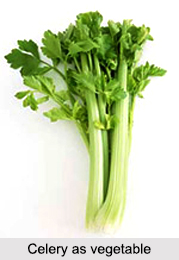 From the above mentioned values, it is apparent that leaves are more nutritious than stalk, particularly from the viewpoint of protein, vitamins A and C.
From the above mentioned values, it is apparent that leaves are more nutritious than stalk, particularly from the viewpoint of protein, vitamins A and C.
Uses of Celery Seed
The celery seed is available as whole or ground. The celery fruit (or seed) yield 2 to 3 % of a pale yellow volatile oil with a persistent odour. In trade, this is known as celery seed oil and is much valued both as a fixative and as an ingredient of novel perfume. The principal constituents are - d-limonene (60 %), d-selinene (10 %), sedanonic acid anhydride (0.5 %) and sedanolide (2.5 to 3 %). The last two bring aroma of the oil. Green leaves yield 0.1 % volatile oil, but it has no commercial importance. Celery Chaff oil has a somewhat harsher and coarser odour than that of celery seed oil. It has less demand and value than the seed oil. Oleoresin of celery seed is prepared by extracting the crushed dried celery seeds with suitable volatile solvents and filtration under vacuum. The oleoresin not only possesses the volatile top note of the essential oil, but also the `body` i.e. the fixed or non-volatile extractive matter of the used celery. Oleoresin could rightly be considered as `liquid celery seed`. The fruits also yield 17 % of fatty oil. This is used as an anti-spasmodic and nerve stimulant. It has been successfully employed in the treatment of rheumatoid arthritis. It also acts as an intestinal antiseptic.
Benefits of Celery Seed
Celery seeds have a number of benefits. They are rich in important nutrients, as mentioned above. They are a great source of Calcium, manganese and iron. Celery seeds are also low in calories. Since the seeds are rich in magnesium, phosphorus and calcium, they support good bone health in the human body. Celery seeds are a great source of non-heme iron. Eating iron-rich food helps the human body produce red blood cells and thus prevents anaemia. Another big benefit of the seeds is that they control blood sugar levels and reduce the risk of type 2 diabetes. Researches have even showed that celery seeds possess anti-bacterial and anti-oxidant properties. In addition, these seeds possess qualities that help in preventing cancer, high blood pressure, insomnia, etc.
Commercial purposes of Celery Seed
The commercial use of celery seed oil is that it is used as a fixative, as an important ingredient in perfumes, in medicines and in flavouring of different types of foods, such as meats, sausages, canned soups, sauces, celery tonics and medicinal preparations. Celery is cultivated and raised in the north-west Himalayas, Punjab and Uttar Pradesh. In the Amritsar district of Punjab alone, about 300 acres had been put under cultivation of this crop in the Rabi season. Celery seed is in great demand both in India and abroad. In colder climates and on the hills, celery is a biennial crop and produces seeds only in the second year, but in the plains, it becomes an annual crop and produces seeds in the very first year. It is a moisture loving plant. It also requires cool climate.

